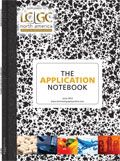Concentrating Phenolic Compounds Using the XcelVap Concentration System
Natural and synthetic phenolic compounds have been used in a wide range of applications, from antiseptics and fungicides to food additives.
Natural and synthetic phenolic compounds have been used in a wide range of applications, from antiseptics and fungicides to food additives. With the adoption of the Clean Water Act (CWA), many phenolic compounds were placed on a list of "Priority Pollutants." This list encompasses highly manufactured compounds which were found in water with a frequency of 2.5% or more (1). In addition, the entire class of compounds or specific compounds may be written into National Pollution Discharge Elimination (NPDES) permits to control release into public waterways (2).
Although the general analysis process contains extraction, extract drying, and evaporation steps prior to chromatography, this note will describe a procedure for the evaporation and concentration of organic solvent extracts containing phenolic compounds. It will make use of an automated pressure ramp during the concentration procedure to ensure that a maximum throughput of samples is achieved.

Table I: XcelVap conditions
Experimental
The XcelVap benchtop, heated water bath, nitrogen blow-down system (Horizon Technology) was used with 200-mL nipple tipped concentrator tubes. The following procedure was followed:
1. Set the XcelVap conditions using the parameters given in Table I and allow the bath to equilibrate.
2. Place 200 mL of dichloromethane (DCM) into each of the six 200-mL XcelVap concentrator tubes.
3. Using a spiking mix of phenolic compounds and surrogates prepared at 100 µg/mL, add 0.5 mL of the mix to each of the six concentrator tubes.
4. Start the XcelVap.
5. When complete, remove the rack from the XcelVap unit to prevent excess heat transfer to the extracts.
6. Using a pipette, transfer the concentrated extract to an auto-sampler vial, being sure to rinse the concentrator tube with DCM and bring the final volume to 1 mL.
Results
Table II shows the results of 12 replicate extracts concentrated using the procedure as given above. Each was concentrated using a single, automated pressure ramp and resulted in 0.5–1 mL of solvent. The extract was then brought up to a final volume of 1 mL prior to being injected onto the GC–MS.

Table II: Average recovery and precision of 12 replicate evaporations
Conclusions
The XcelVap Concentration System yields excellent recoveries for phenolic compounds when used in a fully automated capacity. With its large volume concentration tubes, the XcelVap System can be used with sample extracts from a wide range of extraction procedures including solid phase extraction (Method 3535), liquid-liquid extraction (Method 3510), continuous liquid-liquid extraction (Method 3520), TCLP extracts (Method 1311), pressurized fluid extraction (Method 3545), and ultrasonic extraction (Method 3550).
References
(1) http://water.epa.gov/scitech/methods/cwa/pollutants-background.cfm.

Horizon Technology, Inc.
16 Northwestern Drive, Salem, NH 03079
tel. (603) 893-3663, fax (603) 893-4994
Website: www.horizontechinc.com

The Benefits of Custom Bonded Silica
April 1st 2025Not all chromatography resins are created equal. Off-the-shelf chromatography resins might not always meet the rigorous purification requirements of biopharmaceutical manufacturing. Custom bonded silica from Grace can address a wide range of separation challenges, leading to real performance improvements. Discover more about the latest innovations in chromatography silica from Grace, including VYDAC® and DAVISIL®.
5 Things to Consider When Selecting a Chromatography Silica
April 1st 2025Particularly in the pharmaceutical industry, drug purity isn’t just a goal – it’s essential for achieving safety, stability and efficacy. However, purification is easier said than done, especially with challenging molecules like DNA and RNA “oligonucleotides,” due in large part to their diversity and the range of impurities that can be generated during production. Enter DAVISIL® chromatographic silica, with a wide range of pore diameters and particle sizes to meet your specific application, performance and sustainability requirements. Before you choose the chromatography resin for your next purification application, take a look at these 5 considerations.
Automating Protein Purification: Efficiency, Yield, and Reproducibility
March 27th 2025Recent advancements in automated protein purification stress the importance of efficiency, scalability, and yield consistency. This eBook compares different purification platforms, highlighting their impact on downstream applications and demonstrating how automation enhances throughput and process control.
MilliporeSigma: Ultrapure Water for Sensitive LC-MS Analysis of Pesticides
March 25th 2025The aim of the study was to illustrate the efficiency of Milli-Q® water purification systems in eliminating pesticides from tap water, thereby producing and delivering reliable and consistent-quality ultrapure water suitable for pesticides analysis















